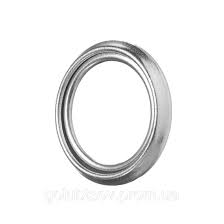Oil Seal Specifications for 20mm by 35mm Size Components and Applications
Understanding Oil Seals The Essential Component for Machinery
Oil seals, often overlooked, play a crucial role in various mechanical applications. Among the myriad types available, the oil seal labeled 20 35 7 stands out for its specific dimensions and applications. In this article, we will explore what oil seals are, their importance in machinery, and the specific characteristics of those with the designation 20 35 7.
What is an Oil Seal?
An oil seal, also known as a shaft seal or rotary seal, is a device used to seal the gap between a rotating shaft and the stationary housing in machinery. Its primary function is to prevent the leakage of lubricants and contaminants, which is vital for the efficient operation and longevity of mechanical systems.
Oil seals are typically made from flexible materials such as rubber or polymers, which allow them to create a tight seal around the shaft. They are designed to withstand various conditions, including temperature fluctuations, exposure to chemicals, and mechanical wear.
Importance of Oil Seals
The significance of oil seals in machinery cannot be overstated
. Their primary functions include1. Leak Prevention One of the most important roles of an oil seal is to prevent lubrication oil from leaking out of the machinery. This is essential for ensuring that the moving parts are adequately lubricated, reducing friction and preventing wear.
2. Protection from Contaminants Oil seals also protect critical machine components from external contaminants such as dirt, dust, and moisture. By keeping these unwanted particles out, oil seals enhance the performance and lifespan of the machinery.
3. Pressure Maintenance In systems where pressure is a factor, oil seals help maintain the necessary pressure levels. Their ability to maintain a tight seal contributes to the overall efficiency of hydraulic and pneumatic systems.
4. Cost Efficiency By reducing wear and tear on machinery and minimizing lubricant loss, oil seals contribute to lower maintenance costs and less frequent equipment replacement.
oil seal 20 35 7

The Characteristics of Oil Seal 20 35 7
Now, let’s delve into the specific oil seal type indicated by the dimensions 20 35 7. Here, the numbers refer to key specifications of the seal
- 20 mm (Inner Diameter) This is the diameter of the hole through the center of the seal, which fits onto the shaft. A precise inner diameter is crucial for ensuring a snug fit, preventing leaks, and avoiding excessive wear.
- 35 mm (Outer Diameter) The outer diameter indicates the total size of the seal that fits within the housing. This measurement is equally essential for proper installation and functionality.
- 7 mm (Width) The width of the seal determines how much surface area is in contact with the shaft and housing. A wider seal can generally accommodate more movement and create a more robust barrier against leakage and contaminants.
Applications of Oil Seal 20 35 7
Oil seals like the 20 35 7 are utilized in numerous applications, including automotive, industrial machinery, and household appliances. They are frequently found in engines, gearboxes, pumps, and compressors, serving diverse roles in various systems.
For instance, in automobiles, these seals are crucial in keeping engine oil contained and preventing it from leaking. Meanwhile, in industrial settings, they are essential in maintaining the integrity of hydraulic systems, ensuring they operate efficiently and safely.
Conclusion
In conclusion, while oil seals, such as the 20 35 7, may seem like simple components, they are vital to the functionality and efficiency of many mechanical systems. Understanding their role, importance, and specific applications can lead to better maintenance practices, longer equipment lifespans, and ultimately, greater operational efficiency. Investing in quality oil seals is a small price to pay for the significant benefits they provide in machinery performance and reliability.
-
Simplifying Oil Changes: A Comprehensive Guide to Oil Drain Plugs and Their Variants
News Aug.04,2025
-
Mastering Oil Drain Maintenance: Solutions for Stripped, Worn, and Upgraded Oil Plugs
News Aug.04,2025
-
Fixing Oil Pan Plug Issues: Leaks, Stripped Nuts, and the Right Replacement Solutions
News Aug.04,2025
-
Everything You Need to Know About Oil Drain Plugs: Sizes, Fixes, and Upgrades
News Aug.04,2025
-
Choosing the Right Oil Drain Plug: A Guide to Sizes, Materials, and Drain Innovations
News Aug.04,2025
-
A Complete Guide to Automotive Drain Plugs: Types, Problems, and Innovative Solutions
News Aug.04,2025
-
The Ultimate Guide to Car Repair Kits: Tools and Essentials Every Driver Should Own
News Aug.01,2025
Products categories















